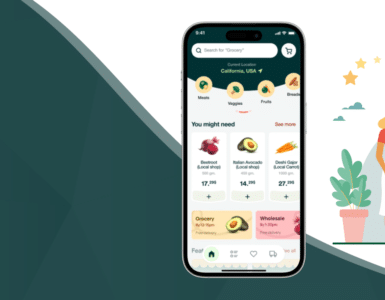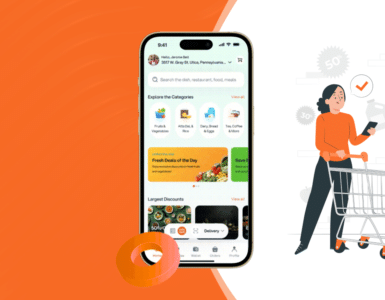Mobile App Development for Business – A Complete Guide
With today’s digital transformation, mobile is the heartbeat of modern business. We live in an era where a tablet or smartphone is always in your pocket—and users expect seamless, powerful mobile apps. From e-commerce platforms to enterprise solutions, the opportunity is vast. If your business lacks a custom app, you may be missing out on critical engagement and revenue.
This guide will walk you through the complete mobile app development lifecycle—from initial goals to post-launch maintenance—and highlight why now is the perfect time to build your app.
1. Defining Your Goals for Mobile App Development
Every app project should begin with clear, measurable, and attainable goals—both for your bottom line and your customers’ needs. Too often, businesses define their objective as “increase revenues,” but overlook user value. A stronger hypothesis: “Our app must solve [X problem] for [Y users] within [Z timeframe].”
Use quantitative targets (e.g. “boost engagement by 20%”) and qualitative goals (e.g. improve brand perception). This approach keeps your team aligned and supports user-centric thinking.
2. Analyzing Your Market & Target Audience
You may have a dazzling app idea, but without market validation, it might not resonate. In current times, user behavior and technology demands are evolving rapidly.
Actionable steps:
-
Conduct surveys and user interviews
-
Recruit a focus group
-
Analyze competitors and industry data
Use tools like Google Trends or App Annie to understand download trends, user retention, and pricing strategies. Only proceed when you’ve confirmed your app offers real value to a specific audience.
3. Creating the Design & Experience
Design is much more than aesthetics—it’s about fluid, intuitive user experience (UX) and interface (UI) design. This phase consists of:
-
User flows: Visual maps of user journeys
-
Wireframes: Low-fidelity skeletal layouts
-
High-fidelity mockups: Detailed, clickable prototypes using tools like Figma or Sketch
By now, AI-enhanced prototyping (e.g. Figma’s Auto Layout) has become mainstream—allowing you to test interactive prototypes quickly, both internally and with users.

4. Choosing the Right Development Approach
Your decision among native, hybrid, or web applications impacts user experience, time to market, and cost.
Approach |
Pros |
Cons |
|---|---|---|
Native (iOS, Android) |
Best performance, greatest access to device features |
Higher cost and development effort |
Hybrid (React Native, Flutter) |
Shared codebase, faster launch |
Slightly less native feel |
Web apps (PWA) |
Fastest turnaround, cost-effective |
Limited device functionality |
As of now, Flutter and React Native dominate hybrid development, offering near-native performance with significant time savings.
5. Prototyping & MVP Validation
Develop a Minimum Viable Product (MVP) or prototype that delivers core functionalities and allows for user feedback and investor validation. Interactive prototypes let you identify UX flaws, bugs, and value gaps before full-scale development.
Don’t forget: secure your prototype with authentication and data encryption to protect early access.
6. Testing: Ensuring Quality & Reliability
Robust testing is vital before launch. Here are the key test types:
-
Functional test: Ensures core features work correctly.
-
Performance & load testing: Assesses how the app handles high concurrency and stress.
-
Compatibility tests: Checks performance across different devices and OS versions.
-
Security audit: Confirms data encryption, secure storage, and safe networking.
Following OWASP Mobile Security Guidelines is a best practice. Third-party libraries like MobSF or AppScan can automate much of this process.
7. Launching to App Stores
Once you’ve fixed all major issues, it’s time to publish on:
-
Apple App Store (follow up-to-date App Store Review Guidelines)
-
Google Play Store (ensure compliance with the latest data privacy and target CPU architecture requirements)
Craft a compelling store listing with high-quality screenshots, localized descriptions, and a polished app icon to maximize discovery.
8. Gathering User Feedback & Monitoring
Launching doesn’t mean the job is done. Collect user reviews, conduct in-app surveys, monitor analytics (e.g., via Firebase, Mixpanel), and track KPIs like:
-
Daily Active Users (DAU)
-
Session Length
-
Crash Rate
Let’s accepted truth: negative feedback is a goldmine—it points to areas for improvement and loyalty building.
9. Refining and Iterating with App Updates
No app is ever “finished.” Frequent updates, guided by feedback and analytics, help you stay ahead. Conduct regression testing with each release to ensure new features don’t break existing UX.
10. Maintaining Your App Continuously
Even after launch, continue investing in:
-
OS compatibility: Support new iOS and Android versions
-
Security updates: Address vulnerabilities promptly
-
Compliance: Keep in line with regulations (e.g., GDPR, CCPA) and store policies
Professional app maintenance services guarantee smooth performance and avoid outdated code debt.
Summary: A Strategic Process for Success
To sum up, a successful mobile app for business involves a disciplined, user-first process:
-
Define clear, user-centered goals
-
Validate market demand
-
Design with UX/UI best practices
-
Choose the optimal development approach
-
Prototype and test early
-
Thorough testing across all dimensions
-
Publish responsibly
-
Measure and analyze user feedback
-
Iterate constantly
-
Maintain rigorously
Whether you aim to boost customer engagement, streamline enterprise workflows, or grow revenue, each phase is vital. Overlooking any step can lead to cost overruns, security vulnerabilities, or poor user experience.
Additionally, Check out our comprehensive guide: Mobile App development for Business
By following this Complete Mobile App Development Framework, you’re not just building an app—you’re building a sustainable digital asset that drives engagement, ensures customer satisfaction, and adapts to tomorrow’s challenges.
Ready to embark on your mobile app journey? Learn how our expert team can transform your vision into a world-class app. Contact us today!
























